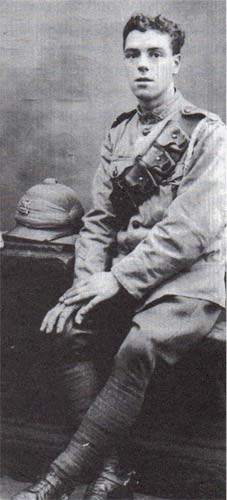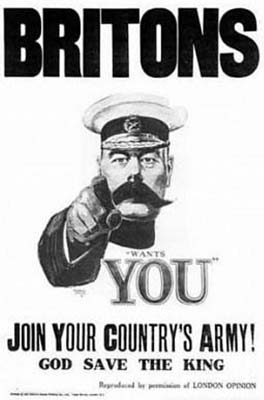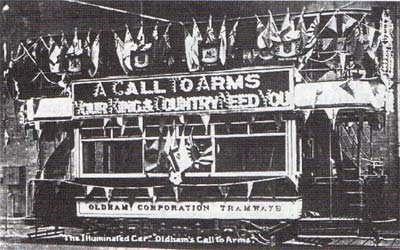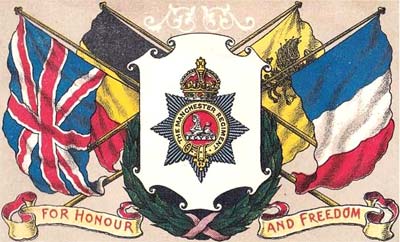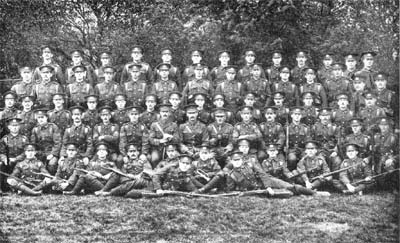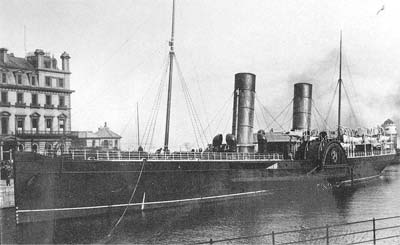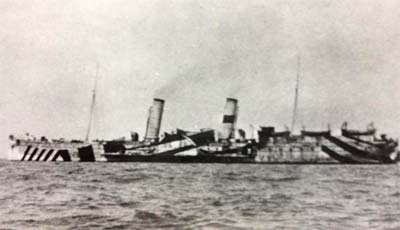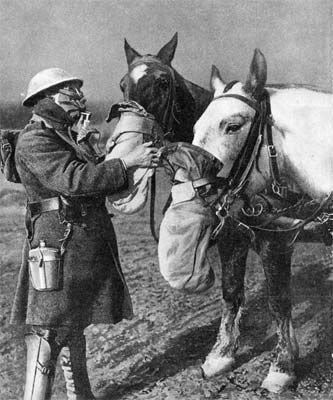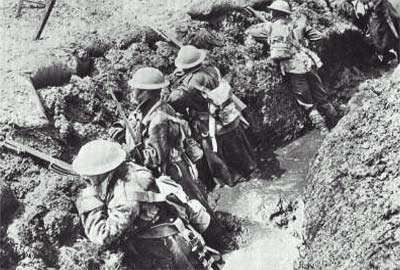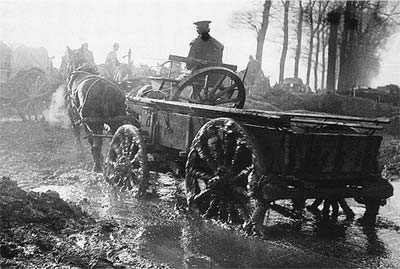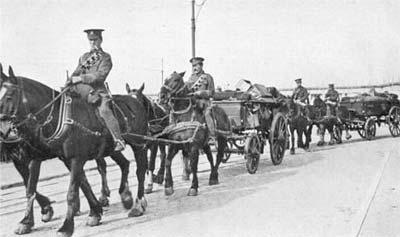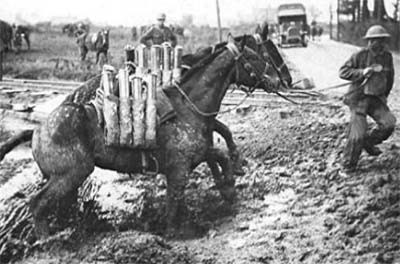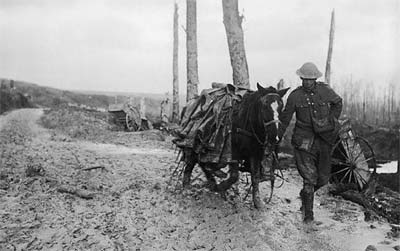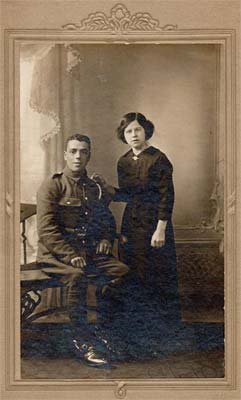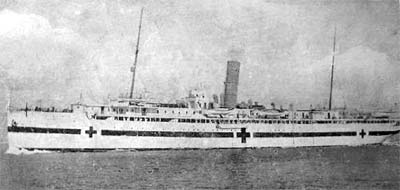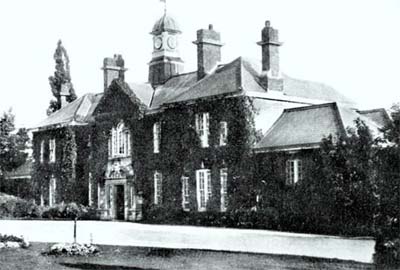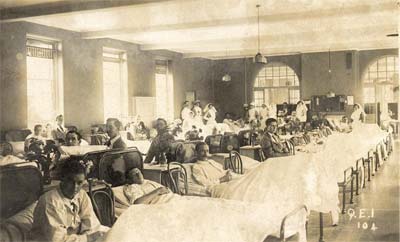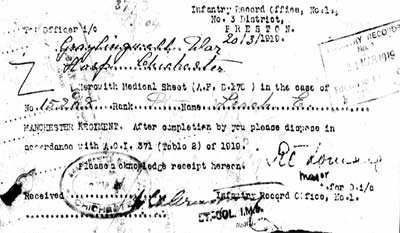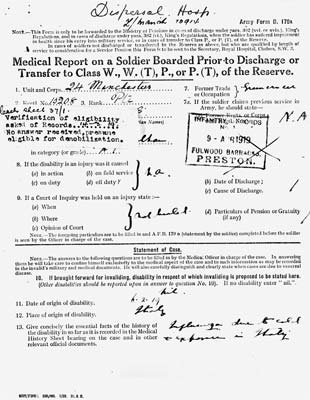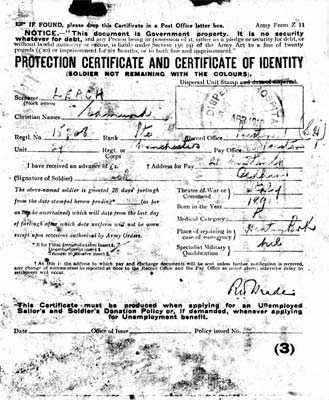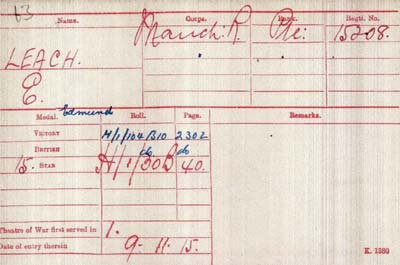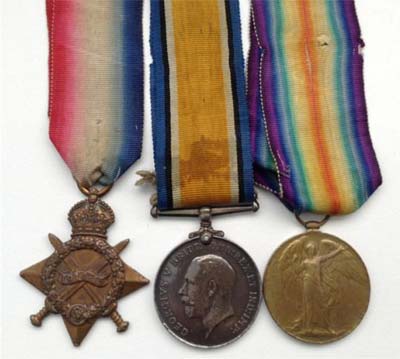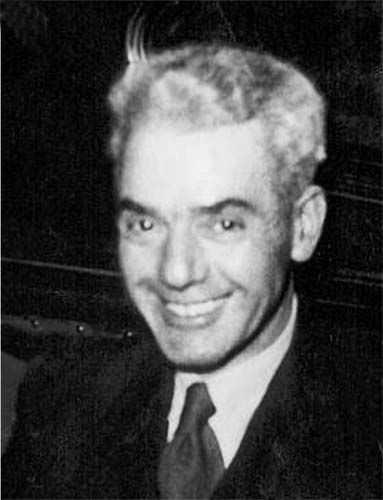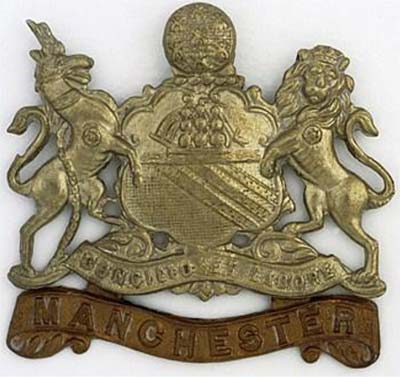
|
THE
BATTLE OF THE SOMME
|
 |
JULY TO NOVEMBER 1916
|
|
SOLDIERS IN THE 24th MANCHESTER REGIMENT EDMUND LEACH
Manchester Regiment 24th Battalion Duplicated from 'Edmund Leach' Pages in 'Servicemen We Know' Edmund Leach was my grandad, but I only found out that he had served in the Great War when I became involved in a project for the centenary of World War One. Grandad died in 1952 when I was seven, and all I can remember about him is his white curly hair, big smile and kind gentle nature. Through searching his records and reading War Diaries I was able to find out more about him and the men who served in the 24th Battalion of the Manchester Regiment. |
|
From Work to War |
|
Edmund was born in 1891 in Oldham, a town with the reputation of being the world's largest producer of spun cotton. From leaving school at 12 years of age until he was 18 he worked in a cotton mill similar to the one pictured. At 18 Edmund took the opportunity to leave the mill and work as a Carter for Oswald Hague, Fruiterer & Florist of 34 Windsor Road, Werneth, Oldham. Being a Carter meant collecting and delivering goods by horse and cart. Little did he know at the time how his new job would affect what he was asked to do in the war. Carrying out his daily tasks, it seems unlikely that Edmund gave any thought to the conflict between the great powers of the world that had been going on for about four generations. Then in June 1914 the Austrian Archduke Franz Ferdinand was assassinated. This brought about a crisis that escalated into circumstances that led to the start of the war, and by 4th August Britain had joined in, declaring war on Germany. Life for Edmund and the other young men of Oldham was to change drastically . |
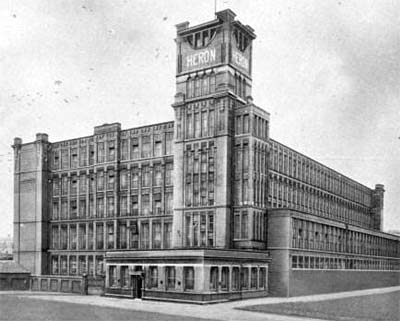 |
The Secretary of State for War, Lord Kitchener, knew he needed lots more men if there was to be victory. He wanted them to be volunteers rather than conscripts so a number of ways were devised to recruit. |
Other ways to help the recruitment process were used. Men were encouraged to enlist together and promised they would serve alongside their friends, neighbours or workmates. This was called the 'Pals' movement, but one of the major drawbacks of this type of recruitment was that a town could lose all its enlisted men in a single day. Oldham Town Council received permission to raise a third battalion and thought Oldham would be honoured if the 1,150 required could be enlisted within one week. On 22nd October 1914 the first meeting was held to start the recruitment for the 24th Battalion of the Manchester Regiment. Despite appeals to men's sense of duty it wasn't until 26th January 1915 before the full requirement was achieved.
|
|
With the required men training could begin, and a 30 acre field at Chadderton Hall Farm was procured for this purpose. In March 1915 it was from here that the Battalion moved off to go to Llanfairfechan in Wales. These enthusiastic men did not know as they moved off that the town council had been informed that they must have a Reserve Company before the battalion would be allowed to go overseas. Once more the Empire Theatre was use to enlist the required men. More methods were also thought of to encourage volunteers. Some men were paid for each man they persuaded to sign up. Then there was the Oldham Recruitment Tram [see picture above]. Likely it was a combination of these that Edmund Leach responded to. Edmund enlisted on 20th April 1915. At that time men did have a degree of choice as to the regiment they joined, and like many others from Oldham he chose the Manchester Regiment. He became Private No. 15208 assigned to the IX Platoon of C Company of the 24th Battalion. Because of his experience with horses Edmund was given the job of Transport Driver. He was to discover his Carting would be very different to what he was used to. |
At the time Edmund enlisted recruits had to be taller than 5' 3" and aged between 18 and 38. Edmund was clearly old enough to enlist but only just qualified with his height as his Army record describes him as height 5'4". The record also shows: Weight 119lbs. His chest when expanded was 35" and his expansion was 2". Vision for both eyes was 6/6. He was 23 years 300 days old and his home address 124 Victoria Street, Chadderton, Oldham. In May 1915 Edmund arrived in Grantham to join the rest of the Battalion. The British Army 30th Division was formed at Grantham in April 1915 from the Pals Battalions raised in Liverpool and Manchester Areas. This included Oldham and the 24th Regiment found themselves under the command of the 91st Brigade of the 30th Division. On 12th September they left Grantham and arrived at Salisbury Plain. The next day a troop train took them to Amesbury and on disembarking they marched to Larkhill Camp. |
'C' Company : Platoon No. IX |
On 31st October the 24th Battalion received orders to mobilize and on 4th November 'Embarkation' orders were received. It was time to go: On the 8th November they left Larkhill Camp for Amesbury Station but this time three trains set off for Southampton. C Company was on the third train leaving at 1.25pm. At 6pm they embarked on the Isle of Man Packet 'Mona's Queen' for France. Although the sea passage was fairly calm, goodness knows what the atmosphere on board must have been like. Over a thousand men, some never having been on a ship before. There was probably fear, seasickness, excitement, and finally relief as the ship reached Le Harve in the early hours of next morning. |
|
Isle of Man Packet 'Mona's Queen' Mona's Queen was chartered by the government in March, 1915 and was adapted for war by the Steam Packet's own workshops in Douglas. She was then used as a troop carrier mainly between Southampton and Le Harve where the British expeditionary force landed. She is thought to have carried half a million troops. |
Isle of Man Packet 'Mona's Queen' in War service [Unlike other forms of camouflage, dazzle works not by offering concealment but by making it difficult to estimate target's range, speed and heading.] |
British soldier wearing a Small Box Respirator checking WW1 Photos Centenary Website: 2014-2018 by Paul Reed |
After disembarking at Le Harve at 7am on 9th November 1915 they proceeded to the Rest Camp No. 5. where they stayed till midnight when they moved off for Pont-Remy, seven miles south-east of Abberville, on the northern bank of the Somme. They marched to their Billet at Ergnies in unsettled weather, rain being followed by snow. During their stay there, short route marches were made and bombing practice carried out. On the 17th November they left for Flesselles via Surcamps, St. Ouen, and Vignacourt. On the 18th in cold and foggy weather they left their billet at Flesselles. Going via Villers-Bocage C Company arrived at billets in Septenville. The Battalion was clearly involved in a lot of marching and moving about but on 19th November they remained in billets where they had feet and kit inspection. Looking after feet was important when marching for miles in snow, rain and mud. Soldiers had written home telling of the problems with winter trench warfare: boots having to be thawed out before putting them on, breaking ice on the drinking troughs etc. From the 19th to the 26th November during intermittent gunfire various activities were carried out: During the day there was more bombing practice, demonstrations and lectures on combating asphyxiating gases. Poisonous gas (chlorine) was used for the first time in 1915, and gas masks were issued to troops on the Front Line to prevent the horrific deaths caused by a gas attack. Horses and dogs too had masks put on them for protection. Not all soldiers received their masks in time, and it has been said that some men would urinate on a handkerchief and put it over their nose and mouth hoping the chemicals would protect them from the gas by neutralizing it. |
On the 26th November they set off again and managed to occupy their billets at Berles au Bois by 3.30pm on 27th November 1915. The Battalion was attached to the 110th Brigade for instruction in the trenches. Now they were experiencing trench life in the battle area. On the 28th November Edmund was with his Company under instruction for grenade throwing, sniping, pioneer work, revelting, and wire entanglements. Conditions were terrible, the weather was awful. A thaw had set in after a heavy snowfall then they had heavy rain. The result of this was that the men in the trenches were up to their waists in water, and being fired on with shrapnel. By 4th Dec the War Diary notes that although it was reasonably quiet except for a few shells there was continuous rain. This meant the Trenches required constant attention in revelting and draining. |
Trench full of water |
On the 5th December they set off for Halloy, it was a difficult trip for transport due to the roads being so bad. |
Picture of transport similar to that Edmund would have driven It is not clear when Edmund would have been given his horses. Drivers were usually responsible for the feeding, watering, shoeing and vet care of two horses. A wagon had a team of six horses so he would have worked with two other drivers. They were responsible for getting supplies, food, ammunition and equipment to the men at work both in and out of the trenches. They also carried wounded men back to medics. It was dangerous work as drivers and horses were targeted by machine guns and artillery to prevent supplies getting through. |
Moving again they set of for Autheux on the 6th. On arrival they set about arranging bath houses and drying room and then cleaned equipment. The next few days were spent marching, machine gun and bombing practice and making improvements to the billeting area. They continued with training and improvement schemes which included fitting latrines with wooden seats and foot grids. Stone was quarried for footpaths, roads were cleaned and mud carted away, and C Company was the first to complete a brick trench oven. By the 16th C Company's footpath to the latrine had been metalled and the latrine completed, then they started preparing the site of their ablution house. Off again, the Battalion marched to Conde a distance of about 15 miles, then next day they set off again for Aumont (Somme) where all the work was started again. Latrines to be dug, roads cleared and a site chosen for the Battalion canteen. Training continued while the work of digging bombing trenches was being carried out. On Christmas Eve training continued but Christmas Day brought some respite. In the morning they had a Service, and despite the rain, a football match in the afternoon. I'm sure the tired and exhausted men were delighted when the Regimental Canteen was opened. Boxing Day was fine, and after services they once again played football. After the break, back to work until 29th January 1916 when the Battalion moved to Riencourt then onto Pont-Noyelles. Next they moved 13 miles away to the village of Morlancourt, roughly four miles to the south of the town of Albert. The Battalion was there for four months, being fired on as they moved in and out of the front line trenches. Out of the trenches work was heavy and Edmund would have been involved in supplying what was necessary to clean and mend the roads, dig trenches, construct dugouts and run the telephone and communication cables. A number of men were killed and wounded during this period. (Mitchinson & McInnes, 1993) On 22nd May 1916 the 24th Battalion Manchester Regiment was changed from a frontline infantry battalion to a Pioneer Battalion. This was probably as part of the preparations for the coming offensive as Pioneer soldiers were the ones who went ahead to prepare the way for battle and then consolidate success. This work was considered very important and Operation Instructions were very clear:
Eventually preparations for what was referred to as Z day were ready, and at 7.30am on the 1st July the 7th Division attacked the enemy starting the famous and notorious Battle of the Somme. On the first day the British suffered 60,000 casualties. Nevertheless the Battalion were able to proceed and some success meant that the following day C Company spent eight hours removing enemy wires from the Mametz-Fricourt Road. The next reference to horses I could find in the war diaries was for 12th September when the battalion moved from Albert to Oisement by train. The diary stated that a covered van could hold 8 horses or 40 men. Horses were to be loaded unharnessed with their nose bags round their necks, and only four men must accompany each horse truck. And so it continued. Descriptions in the diaries tell of the horrible weather: Barrages of shells stopping the work on the trenches; the relentless digging and construction work that must have left them feeling they were rebuilding France; they took a prisoner now and then; they searched for non-contaminated food and water; the battalion beat the 1/10th Manchester at Rugby Football 11 points against 3, and when the Privates played the Officers at Association Football, the Privates won 2 against 1. And sadly, the recording of those who died or were wounded. October sounded a particularly bad month both for casualties and conditions, with mud nearly knee deep. The following pictures show the difficulties this caused for drivers and their horses. |
|
|
|
Italy In November 1917, after two years in France Edmond left to go to Italy. The Battalion's train journey was via Lonceau, Dijon, Avignon, Marseilles, Nice, Vintimille, Genoa, Mantova, to Legnago. On the 25th the Battalion detrained and marched to Bevilacrua. Eventually arriving at Paderno on 19th December 1917 where they billeted. It was cold and the land lay deep in snow. They stayed there until 19th January 1918 when they moved to a village Giavera on the River Piave. |
|
Edmund and wife Agnes 1918 |
Edmund remained in Italy until the end of the war except for fourteen days leave from 14th July to 8th August, 1918. On 27th July, he married Agnes Prendergast at Our Lady & Saint Patrick's Church, Oldham, but it seems likely that the leave was awarded on compassionate terms as his mother was very ill. Indeed she died on 7th August. Perhaps it was some comfort to him that he was at home at that time, but he probably had to miss the funeral as he returned to Italy on 10th August. Although Armistice Day was 11th Nov 1918 he was still there on 6th February 1919 when it was recorded he was disabled by Influenza. The 1918-19 Flu Pandemic swept across Europe, and is thought to have infected 500 million worldwide killing around 100million. |
Edmunds records show he was at a number of hospitals: At the 9th CCS in Italy. [CCS stands for Casualty Clearing Station] Then at 62 General Hospital Italy. The next hospital was 57 Western Hospital, and on 27th February 1919 Edmund was evacuated to England by SS. Panama. He was then at Graylingwell War Hospital, Chichester where he spent 34 days. At the outbreak of the First World War Graylingwell hospital was requisitioned to serve as a Military Hospital to receive war casualties. The casualties came straight from the Western Front, via train from Dover and convoy of all available vehicles, including the hospital's own four ambulances. |
SS. Panama |
Graylingwell Hospital |
Ward at Graylingwell Hospital |
On 2nd April Edmund was transferred to the dispersal unit |
Dispersal Instruction from Graylingwell Hospital
|
Protection Certificate showing Class Z which indicated that Edmund had been allocated to the Reserve Army. When being demobilized or discharged, on arrival to England soldiers received a Z3 Protection and Identity Certificate. |
|
Theatre of War Edmund had served in the First Theatre of War which was the Western Front. He served in France and Italy receiving three medals: |
|
British Army WWI Medal Rolls Index Cards, 1914-1920 |
|
Edmund Leach |
After the War After returning from the war Edmund and Agnes went on to have three children. The first, born in 1921 was a boy who died at birth. In 1923 they had a daughter Mollie. Another daughter they named Agnes was born in 1925. On discharge from the Army Edmund was to find that his job had been given to the son of the shop owner and he was therefore unemployed. He obtained work at a brick yard then later worked for Henry Ogden's Builders. He was working for this company at Chadwick's Bleach Works, on 8th September 1952. While repairing a perimeter wall he had a heart attack and died. |
References
|
|
Written and Contributed by : Moira Lochery (May 2014) |
|
|
back to 'SOLDIERS
in the 24th Manchester Regiment' Gallery
|
